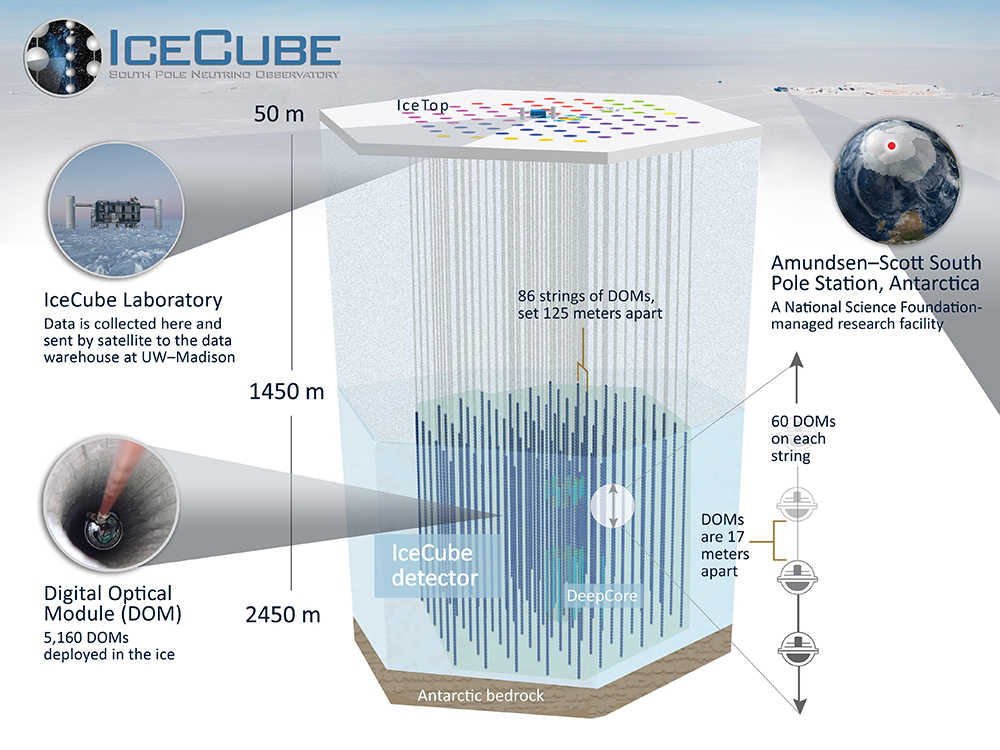The Neutrino Astronomy Division uses data gathered by the world’s largest neutrino observatory, IceCube, located at the South Pole. This includes high-energy neutrino events, which are unique to IceCube. The division’s mission is to solve the puzzle of the origin of cosmic rays, which could be described as products of the extreme nature of the universe.

Cosmic Rays, the high energy subatomic particles that bombard the earth, are the most energetic radiation from our cosmos. Yet their origins have been unknown for more than a century, the most long standing puzzle in astronomy. Although first identified more than a century ago, their origins remained a long-standing puzzle in astronomy. Identifying celestial bodies which emit cosmic rays is very challenging mainly because magnetic fields bend the trajectories of these cosmic rays by an unpredictable amount.Ambient background radiation (Cosmic Microwave Background) can also collide with protons and nuclei produced by these sources. This is most relevant at ultra-high energies, and effectively blocks such cosmic rays from reaching us should they be produced at the far side of the universe.
In contrast, neutrinos interact very little with other forms of matter, enabling them to travel long distances through space in straight lines. They are believed to be generated when cosmic rays collide with the interstellar material or directly produced by cosmic ray sources. Researchers , therefore, believe that sources of high-energy cosmic rays can be pinpointed by capturing neutrinos emitted by high-energy hadrons (protons, neutrons, etc.) This is how the dream of high energy neutrino astronomy began.
The dream has come true when Chiba University’s IceCube team analyzed data gathered by the IceCube observatory, which was completed in 2011. The team discovered that the observatory had captured two events in which it seemed that Cherenkov radiation had been emitted by neutrinos interacting with the ice, one neutrino with an energy of 1.2 PeV, and one at 1.4 PeV. (PeV = petaelectronvolt, equivalent to 1015 electronvolts.) This discovery was announced at an international conference in June 2012. It was the world’s first observation of high-energy neutrinos, the existence of which had been predicted by theory, but until IceCube, never confirmed.
Since this discovery, Chiba’s team has led efforts to implement the algorithm to identify high energy cosmic neutrinos in real time, allowing for immediate followup observations by other telescopes and astronomy satellites world-wide. It was the beginning of neutrino-lead multi-messenger astronomy. In September 2017 a great breakthrough was made. The real time detection of a very high energy neutrino by IceCube and the followup detection by satellite and several telescopes revealed a blazar galaxy, a special type of active galaxy housing a supermassive blackhole emitting collimating “jets”, as a source of the high energy neutrinos. This was the first great leap toward understanding the origins of cosmic rays with neutrinos acting as a primary probe to pindown the physics of celestial bodies. The journey of high energy neutrino astronomy has just begun.